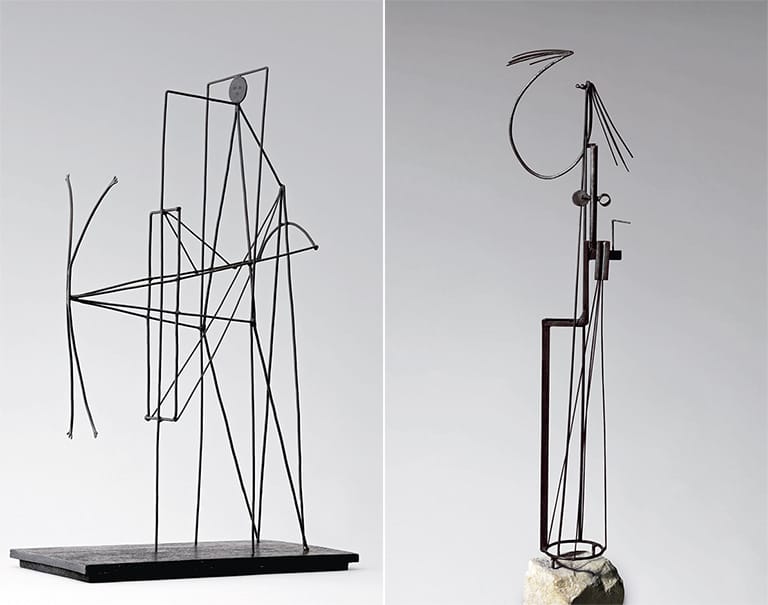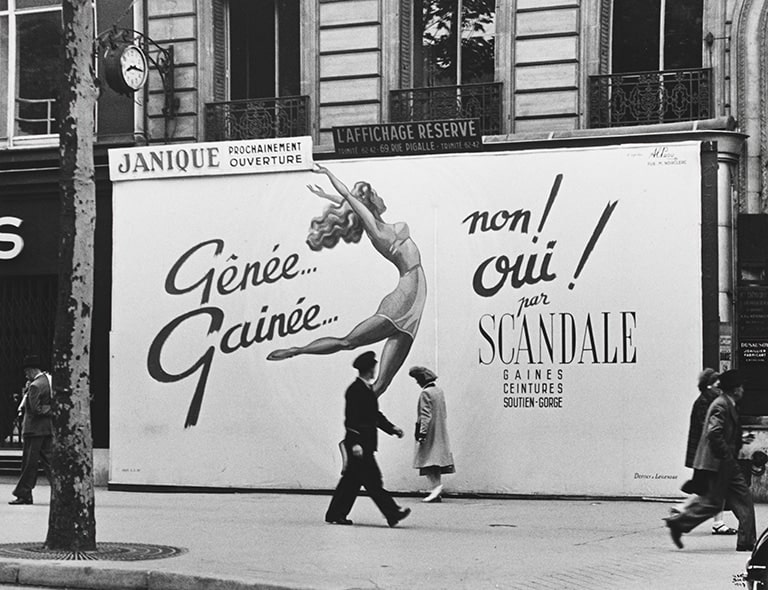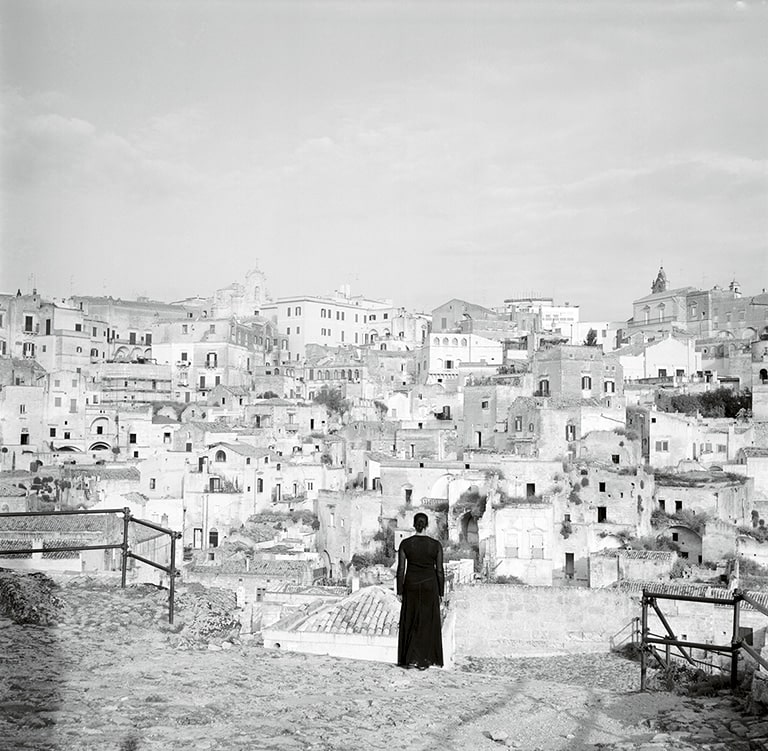La chouette [The owl]
![La chouette [The owl] La chouette [The owl] © Francis Picabia, VEGAP. Madrid, 2020 © Fundación MAPFRE COLLECTIONS](/media/arte-cultura/colecciones/francis-picabia/fm000313.jpg)
Francis Picabia
La chouette [The owl], 1925-1926
© Francis Picabia, VEGAP. Madrid, 2020
© Fundación MAPFRE COLLECTIONS
Technique
Watercolor and graphite on paper
Dimensions
Paper size: 25 × 32,2 cm
Frame size: 61 x 68 x 4 cm
Inventory
FM000313
Description
After the splendid creative period of the early twenties, characterized by few but significant paintings such as L’Oeil Cacodylate (The Cacodylic Eye) and La Nuit Espagnole (The Spanish Night), Picabia, after the Dadaist movement had been publicly and notoriously abandoned, took up painting in a way that was already systematic launching himself self-assuredly to paint all kinds of themes and styles, passing absolutely everything established, both in avant-garde and traditional circles.
In 1926, the auction of Marcel Duchamp’s supposed collection of Picabias took place at the renowned Hotel Drouot, 80 pieces which formed an anthology: from the first impressionist works to the more contemporary. In the foreword to the catalog Duchamp himself divided his colleague’s recent work into: «Spanish themes», «monsters» and «collages», as Maria Lluïsa Borràs, one of the leading authorities on Picabia, recalls. Without a doubt, “La Chouette” belongs to the second group but it already points to another future series, immediately afterwards, the «transparencies», although in this case that curious and original juxtaposition, so characteristic of the artist’s work between 1926 and 1931, still does not occur, nor the obligatory references to romanesque painting that would exert so much influence on his work, especially on a new trip to Spain and in particular to Barcelona, which he made in 1927.
The figure to the right of “La Chouette” seems to be a strange deity —perhaps a god of love or sex— and is clearly inscribed among the «monsters», with its violent angular lines, almost machinist and abstract, that redirect to the most daring Picasso work, both the Cubism of 1907 to 1910 and that of the twenties after neoclassicism, but at the same time certain surrealist calligraphies by Andre Masson precede. However, the two figures on the left, in classical style, are also distantly reminiscent of Picasso, but of his pink Gòsol period and are a first demonstration of the nude figures, already painted in a conventional but very brazen way, that will be omnipresent in the entire long series of «transparencies» as the background or central theme of the painting. On the other hand, the bird on the woman’s head, which gives the work its title, is an image of clear Egyptian influence, but in the case of different types of owl, symbols of Athena and wisdom, we are transported to Greece, in a transgression that also has something provocative. This mixture of mythologies and religions will be very frequent in Picabia’s productivity in the second half of the twenties.
The pairs of lovers, normally naked, is another constant theme, as much in «monsters» as in «transparencies». They represent the affirmation of life over art and fashion trends, an attitude vindicated already in the last series of the magazine 391 in 1924 published, according to Borràs, in the middle of the war against André Breton and in which Picabia proclaimed that «instantaneism», a fleeting movement which will give at least one great work in two parts: Relâche / Entr’acte, two pieces from the same show performed by Rolf de Maré’s Ballets Suedois with music by Erik Satie, as well as another para theatrical show: Ciné-sketch in which Duchamp and Francisque Picabia participated and entered the stage naked in the manner of Adam and Eve, according to a photo attributed to Man Ray. The lovers of La Chouette have something to do with Relâche’s figurines, naked or in tight leotards and especially with the aforementioned erotic scene in Ciné-sketch. The clearly sexual attitude of the couple is another provocation from Picabia who loved to confound the bourgeois in their own environment; not in vain was he, then, a rich heir installed in an opulent castle, built to his own taste and specification on the Côte d’Azur. The male figure in the La Chouette couple could even be his own self-portrait.
[Josep Casamartina i Parassols]
BAKER, George, The artwork caught by the tail: Francis Picabia and Dada in Paris. Cambridge, MIT Press, 2007.
BORRÀS, Maria Lluïsa, Picabia. Madrid, Electa, 1993.
BORRÀS, Maria Lluïsa; CAMFIELD, William Arnett; LEBEL, Jean-Jacques, Máquinas y españolas, exh. cat. Valencia, IVAM, 1995.
CALVOCORESSI, Richard, Picabia: 1879-1953, exh. cat. Edinburgh, National Galleries of Scotland, 1988.
CAMFIELD, William Arnett, <e,>Francis Picabia. His Life, Art and Times, Princeton, New Jersey, Princeton University Press, 1979.
CAMFIELD, William Arnett (comisario), Francis Picabia, Nueva York, Solomon R. Guggenheim Museum, 1970.
Francis Picabia (1879-1953), exh. cat. Madrid, Barcelona, Ministerio de Cultura, Dirección General de Bellas Artes y Archivos, Fundació Caixs de Pensions, 1985.
Francis Picabia singulier idéal, exh. cat. Paris, Paris-Musées, 2002.
MUNDY, Jennifer (ed.), Duchamp, Man Ray, Picabia, exh. cat. London, Barcelona, Tate Modern, MNAC, 2008.
PICABIA, Francis, Escritos en prosa, 1907-1953. Valencia, Murcia, IVAM, Colegio Oficial de Aparejadores y Arquitectos Técnicos de la Región de Murcia, 2003.
PIERRE, Arnauld, Francis Picabia: la peinture sans aura. Paris, Gallimard, 2002.
SANOUILLET, Michel, Francis Picabia et « 391 », París, Eric Losfeld, 1966.




